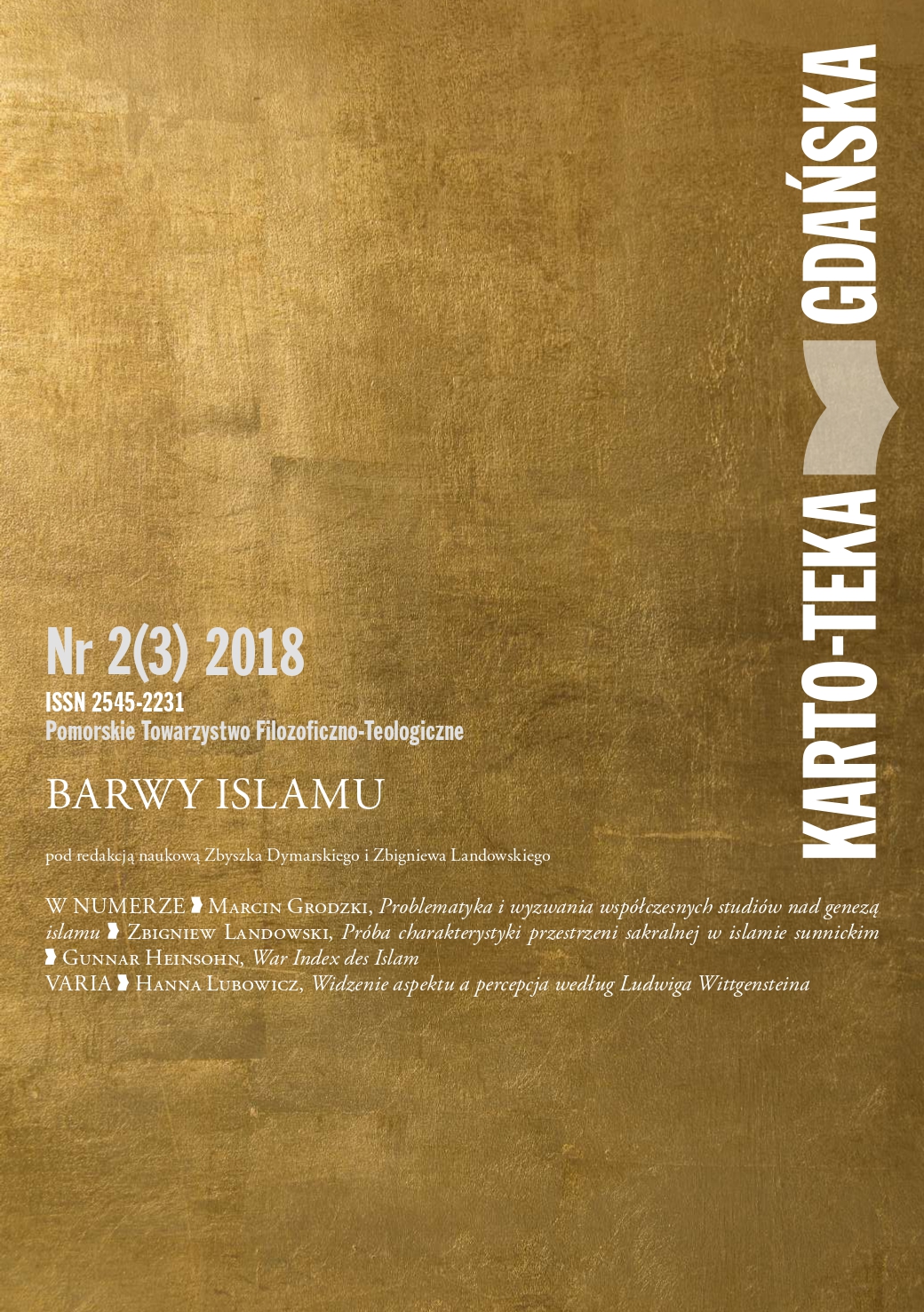Aspect-seeing and perception according to Ludwig Wittgenstein
Keywords:
Witgenstein, seeing, seeing-as, change of aspect, object-image, perception, language, grammar, Gestalt psychology, meaning, introspectionist approach, interpretation, aspect-blindness, internal relations, conceptual investigations, language game, form of lifeAbstract
The purpose of the article is to show the meaning of Wittgenstein’s remarks on seeing-as for understanding the human perception as determined by concepts of our language. As such, perceiving is holistic, undividable in its nature, notwithstanding that some theorists of perception seek out its explanations by means of separating and isolating the alleged „ingredients” of seeing and of other forms of making use of human senses. The crucial phenomenon of „the change of aspect” inclines to undertake different strivings to theorize the nature of the change in question. Aiming at its characterization, they assume, as the starting point, the existence in human minds of various mental „internal” objects, being a sort of „copies” of external things, something like their „materializations”. The two main groups of theories postulatng such „internal impressions”, differently conceptualize the phenomenon of a change of aspect. The introspectionist approaches postulate that interpretation (an intellectual change), effectuated on the pure, sensory data, can be regarded as an intermediary link indispensable to account for the final perception. The Gestalist approaches explain the change of aspect as a change of organization (a sensual change) of the preceding wholes (Gestalts), resulting in the appearance of a new Gestalt (a new ordering of what was previously seen). Here the changing organization is mediatory factor. The both dualistic approaches negate the insoluble character of any act of seing as the inseparable unity of the sensual and the intellectual. That’s why they unavoidably fail to enlighten the atmosphere of paradox and amazement that accompanys the appearance of a new aspect. The intricacy and complexity of seeing-as, as well as of „common” seeing disappears when we understand that aspect-seeing is in fact perceiving internal, necessary (because grammatical) relations between different places in the net of our concepts. Additionally, we must accept that there is a crucial difference between symptoms and criterions of phenomena. Last but not least, when we know and practice the use of words in the tangled, however logical in its way, multitude of language games, rooted in the specific to them form(s) of life, and when we reject all theorisation and Focus on the grammatical approach, no false image can mislead us. The remarks on seeing-as lead also to the conclusion that the perceiving subject doesn’t passively receive the sequence of his/her perceptions, rather: plays an active role in what the objects of his or her perception are: the knowledge, skills, attitudes and motivations, interests and what is important for him/her – all of his this has the decisive meaning for what he/she is able to see.
Downloads
References
Wittgenstein, L., Dociekania filozoficzne, przeł. B. Wolniewicz, Seria: Biblioteka Klasyków Filozofii, Wydawnictwo Naukowe PWN, Warszawa 1972.
Wittgenstein, L., Kartki, przeł. Sława Lisiecka, Wydawnictwo KR, Warszawa 1999.
Wittgenstein, L., Last Writings on the Philosophy of Psychology, t. I, przeł. C.G. Luckhardt, M. A. E. Aue, Basil Blackwell , Oxford 1982.
Wittgenstein, L., Last Writings on the Philosophy of Psychology, t. II, przeł. C. G. Luckhardt i Maximilian A. E. Aue, Blackwell, Oxford UK & Cambridge USA 1994.
Wittgenstein, L., Remarks on the Philosophy of Psychology, t. I, przeł. G. E. M. Anscombe, Chicago University Press, Chicago 1980.
Wittgenstein, L., Remarks on the Philosophy of Psychology, t. II, przeł. C. G. Luckhardt M. A. E. Aue, Basil Blackwell, Oxford 1990.
Wittgenstein, L., Tractatus Logico-Philosophicus, tłum. B. Wolniewicz, Seria: Biblioteka Klasyków Filozofii, Wydawnictwo Naukowe PWN, Warszawa, 1997.

 Academic Scientific Journals
Academic Scientific Journals

